Chapter 8: Cell Structure and Function >
8.1 Life is Cellular
The Cell Theory states that (1) all living things are made up of cells, (2) cells are the basic units of structure and function in living things and (3) new cells are produced from existing cells
Early microscopes utilized lenses with magnification, which opened multiple opportunities in the study of biology. Robert Hooke used an early microscope to observe cork, which is plant material. He observed that the cork was made of tiny minuscule chambers, which he called "cells". 
The most popular and common microscopes found in the lab are Compound, Scanning, and Transmission microscopes.
| Compound light microscope | Scanning electron microscope (SEM) | Transmission electron microscope (TEM) |
|---|---|---|
| Works by shining natural or artificial light through a specimen, passing through the objective lens and ocular lens, enlarging the image | moves a pencil-like beam of electrons, electrons scattered back are picked up by detectors, producing an image line by line. They pick up the shape and surface of a tiny object higher resolution, allowing objects to be studied in greater detail (2 nm)as high as 20,000x | these shoot electrons rather through the specimen rather than detecting the ones that bounce back. you can use them to see structures inside cells 2.10 of a nanometer, 100,000x magnification |
| Some organisms are so small that they must be stained being observing it | Air molecules could be scattered by air molecules so they must be kept in a vacuum chamber which makes it almost impossible for living organisms to be observed | Like SEMs, they work in a vacuum, and samples must be chemically preserved because of this |
| The wavelengths of light itself limit the magnification, so the highest would be about 1000x | always black and white, a computer adds the colors afterward | Also, since electrons need to pass through, samples must be very thin |
Using these technologies, we can observe some of the most fascinating organisms up close
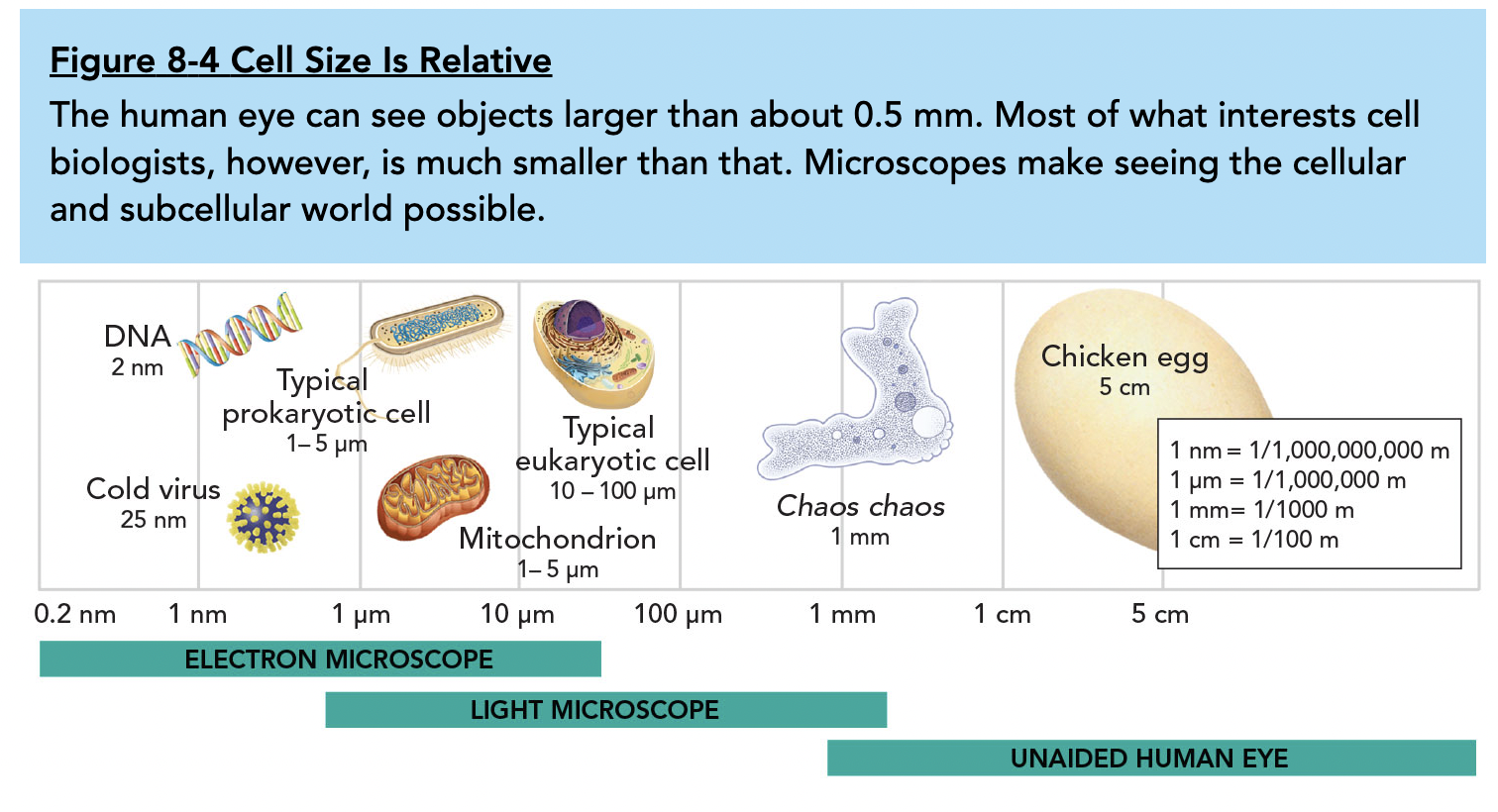
The two categories of cells are Prokaryotes and Eukaryotes, and they are differentiated mainly on whether or not there is a nucleus.
Prokaryotes are small in size, have cell membranes, DNA (they do not contain a nucleus though), ribosomes (structures that create protein), flagella, and cilia (for movement/feeding depending on organisms). They also contain linear DNA in the nucleoid region
On the other hand, Eukaryotes are larger. Both have cell membranes, DNA (except this has it in the nucleus), and ribosomes.
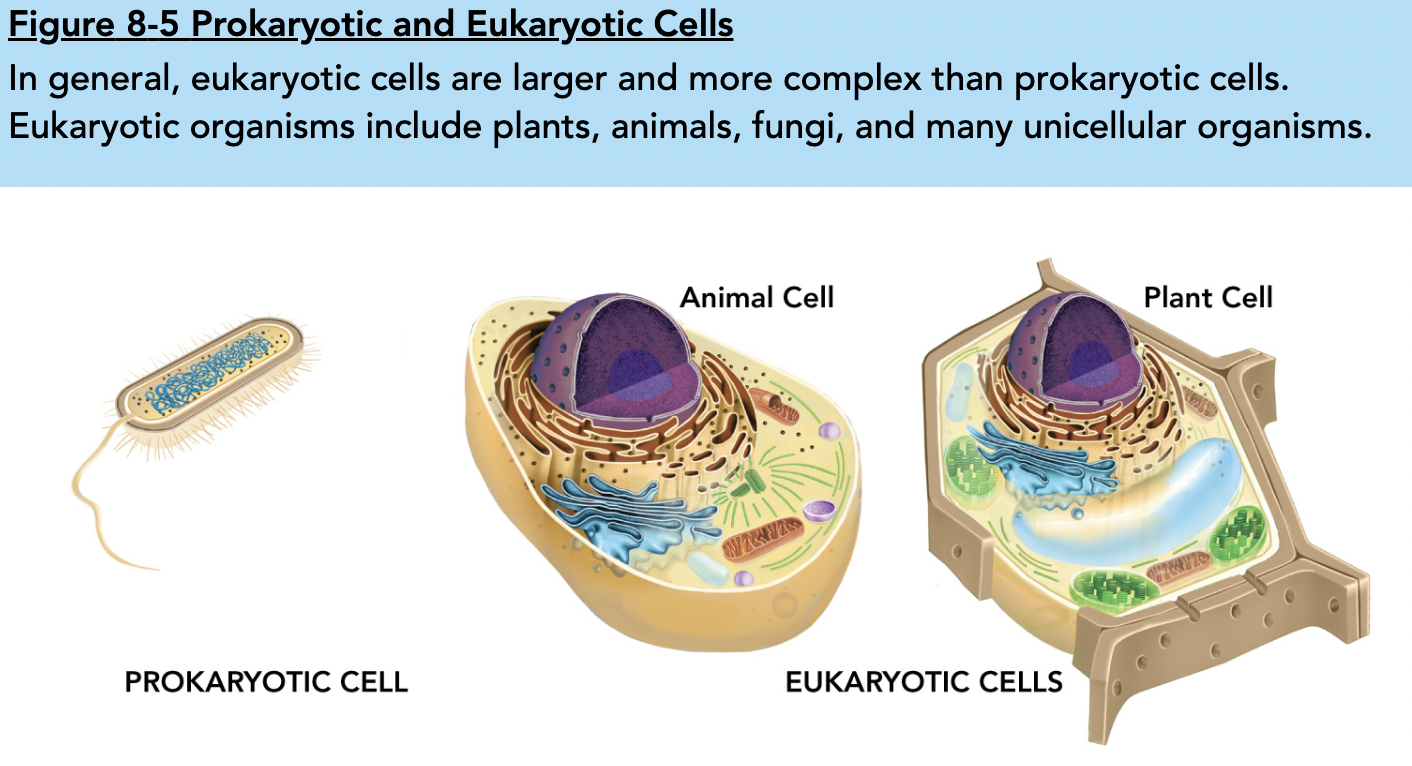
8.2 Cell Structure
Eukaryotes are similar to a factory: very busy and made up of multiple components working together, except these “components” are organelles.
Specialized structures:
The nucleus controls many of the activities and cell processes, it contains most of the cell’s DNA, which has coded instructions. Chromosomes carry the DNA inside the nucleus and are spread out in the form of chromatin. It’s similar to a messy mass of yarn that wraps around proteins. Most nuclei also contain a nucleolus, which is where ribosomes are formed, at the core. RNA is what the ribosomes are made out of. What surrounds the chromatin and nucleolus is the nuclear envelope, which is composed of two membranes. They are covered in nuclear pores which allow ribosomes to leave, and also for the genetic info in the form of RNA to be transferred throughout the cell. The DNA does not leave the nucleus, only small strands of RNA.
- stores genetic information in the form of DNA
- controls and regulates the activities of the cell
<<Protein building-<<
Proteins are assembled and produced on ribosomes, which are small particles of RNA found in the cytoplasm. They take the instructions found in DNA in order to produce proteins.
☆Found in both Prokaryotic and Eukaryotic cells
- site of protein synthesis (creation of proteins)
The endoplasmic reticulum or ER is where lipids, proteins, and exported materials are synthesized. The rough ER is where protein synthesis occurs and can be found with ribosomes on its surface. Proteins from these ribosomes enter the rough ER and then are chemically modified. These proteins will be released from the cell, as they are destined for other specialized locations. “free” ribosomes are those not attached to membranes, and produce other cellular membranes.
- involved in the synthesis of proteins, by producing them with the help of ribosomes
- directly outside the nucleus because it needs to get ribosomes from the nucleus
The smooth ER does not have ribosomes on its surface but contains enzymes that perform tasks such as the synthesis of lipids, or detoxification of drugs.
and some of them are completed on the rough endoplasmic reticulum.
- synthesis of lipids such as phospholipids and cholesterol
☆Both only found in Eukaryotic cells
Many of the proteins synthesized in the rough ER are packaged into vesicles, which are like bubbles made from the membrane of the ER used to transport this protein to the Golgi apparatus for processing→
The Golgi apparatus or Golgi body modifies, sorts, and packages proteins/materials from the ER for storage in the cell/release from the cell.
- It prepares and packages proteins so that the vesicles can be transported to their final destinations. They can stay in the cell, or be exported to somewhere else within the body.
☆Only found in Eukaryotic cells
Rough ER- assembly line
Golgi apparatus- the packaging
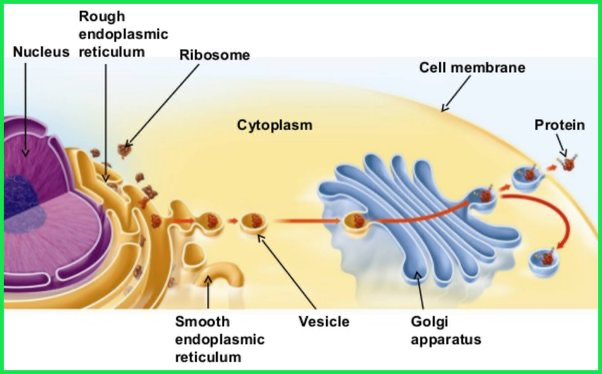
<<Storage, Clean up, and Support<<
Vacuoles found in plant cells have a larger and more noticeable central vacuole that stores water and solutes such as salt. They help maintain the pressure inside of a plant cell which is how they maintain its structure (Example: Celery stays crunchy in water, but if you leave it out, it will become floppy since it loses water pressure). Turgor pressure is the term used to describe this. Some Eukaryotic cells have a vacuole called the contractile vacuole, instead. It contracts to fill up and pump out water in the cell.
☆Found in both Prokaryotic and Eukaryotic
- Stores materials such as nutrients and water, and regulates storage/transport of substances
Vesicles are for transport or export through the cell or outside of the cell, they store and move materials through organelles
☆Found in both Prokaryotic and Eukaryotic
Lysosomes contain digestive enzymes and are known as the “stomach of the enzyme”. They break down lipids, carbohydrates, and proteins to be reused by the cell.
- If you have a nonfunctioning cell, the lysosome can take it, break it down, then recycle
Apoptosis is programmed cell death because the lysosome contains digestive enzymes, if it ruptures, the cell gets digested from the inside out. if there’s something wrong with the cell, it can initiate programmed cell death, so your body will kill that cell in order to keep the error from replicating.
☆Only found in Eukaryotic cells
The cytoskeleton maintains the cell’s structure and is also involved in movement. It is made up of mictrotubials and microfilaments, the difference between them is in the name. One is like a tube: hollow in the center, while the filaments are not.
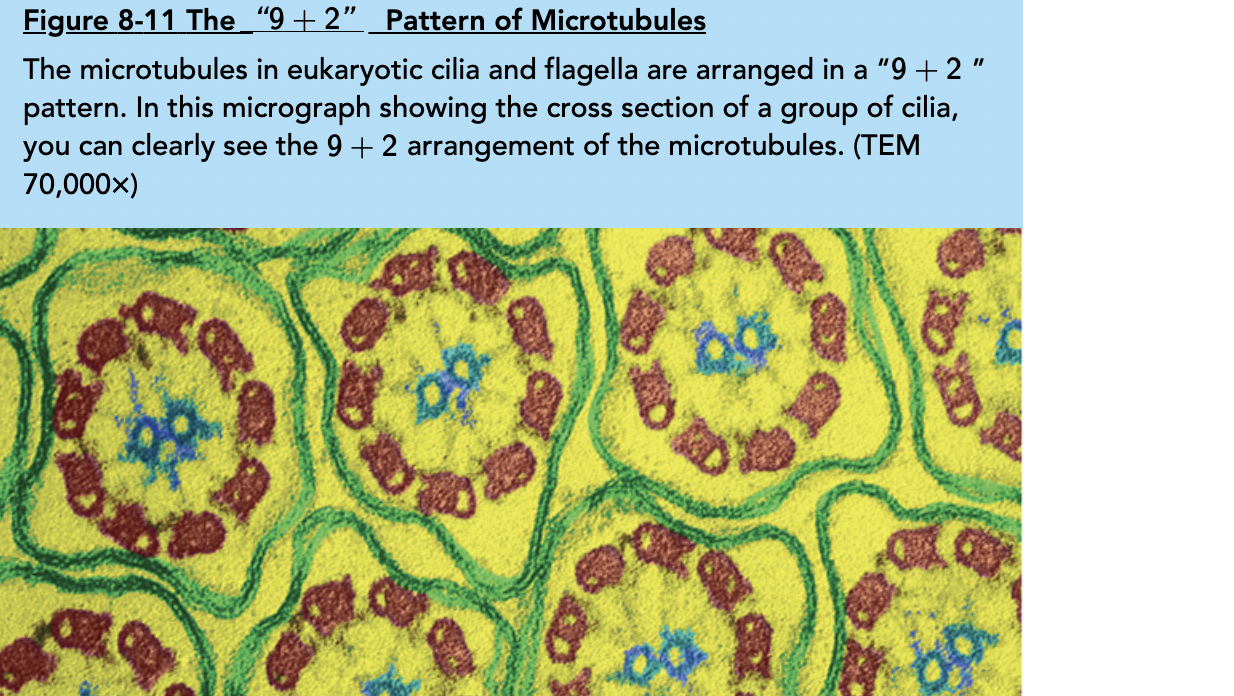
- maintains the structure and is involved in transport. Involved in cell division as well; creates the spindle in cell division.
☆Found in Eukaryotic and Prokaryotic cells
<<The Capture and Release of Energy<<
Chloroplasts are the site of photosynthesis, they capture energy from sunlight and convert it into chemical energy, which is stored in food. This organelle is not limited to plants, as it can also be found in algae. The chloroplast a double membrane, inner and outer membrane, has its own cytoplasm, circular DNA separate from the nucleus, and its own ribosomes as well.
Scientists believe that this organelle was once a prokaryote that got engulfed by a larger eukaryotic cell. (The endosymbiotic theory).
☆Found in both Prokaryotic and Eukaryotic (only plant) cells
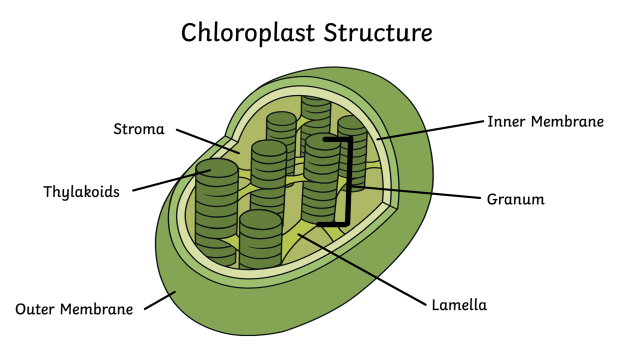
The Mitochondria is the powerhouse of the cell because they convert chemical energy in food molecules to usable energy.
- Involved in cellular respiration, has outer and inner membranes, which could have been prokaryotic at one point. Circular DNA and ribosomes are the evidence for that.
☆Both Eukaryotic and Prokaryotic cells
<<Cellular boundaries<<
The cell wall can be found on the outside of cell membranes. They support, shape, and protect the cell. ☆Found in Prokaryotic and Eukaryotic (only plants) cells.
- They allow certain substances such as water, oxygen, and carbon dioxide in.
The cell membrane is typically composed of a double-layered sheet called a lipid bilayer. The lipid bilayer allows the membrane to be flexible and also forms a strong barrier between the cell and its surroundings.
- This organelle's role is to regulate what enters and leaves the cell, protect, and support.
☆Found in both Prokaryotic and Eukaryotic cells
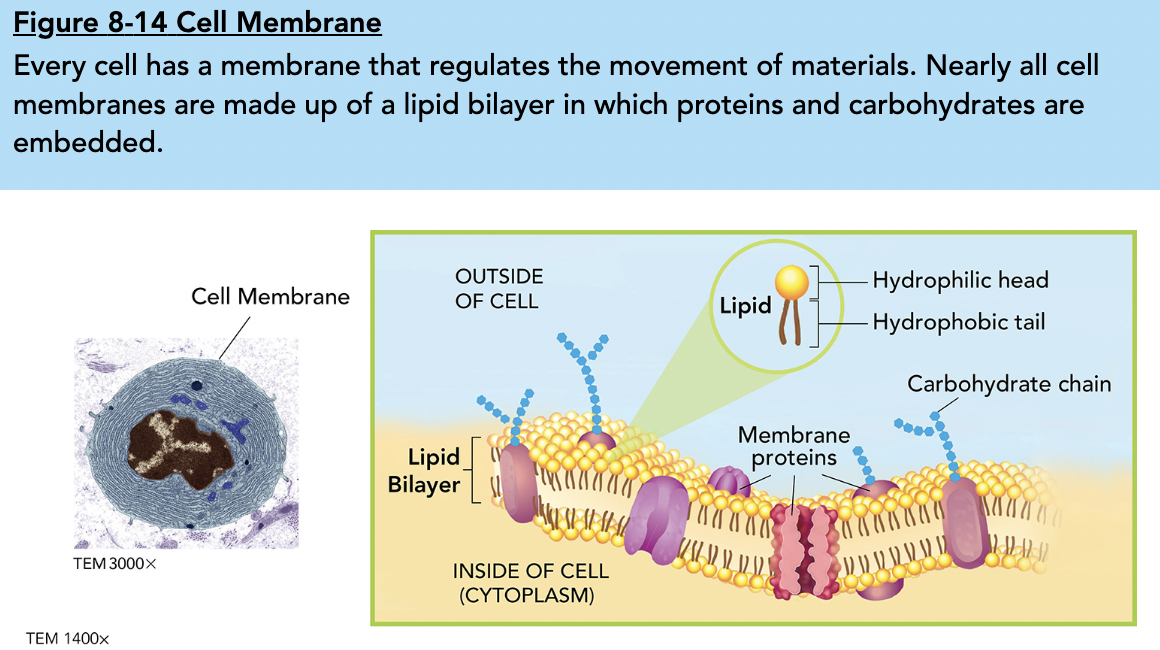
Floating in the lipid sea are proteins. Transmembrane proteins cross the membrane, which can be seen on either side. These transmembrane proteins can have a channel connecting the outside and inside of the cell, so they can actually transport things across the membrane.
SUMMARY


8.3 Cell Transport
Passive Transport (no cellular energy required):
For a cell to maintain homeostasis, it regulates the movement of molecules and substances from both sides of a membrane.
The cytoplasm in a cell contains various substances dissolved in it, they are spread out and move constantly. But when they collide with one another, they tend to move from a more concentrated area to a less concentrated one. When equilibrium is achieved, particles move equally in both directions, so there is no net change. This process is called diffusion, and it does not require energy to work.
Example: a sugar cube dropped into tea will disperse through the liquid, away from its original position.
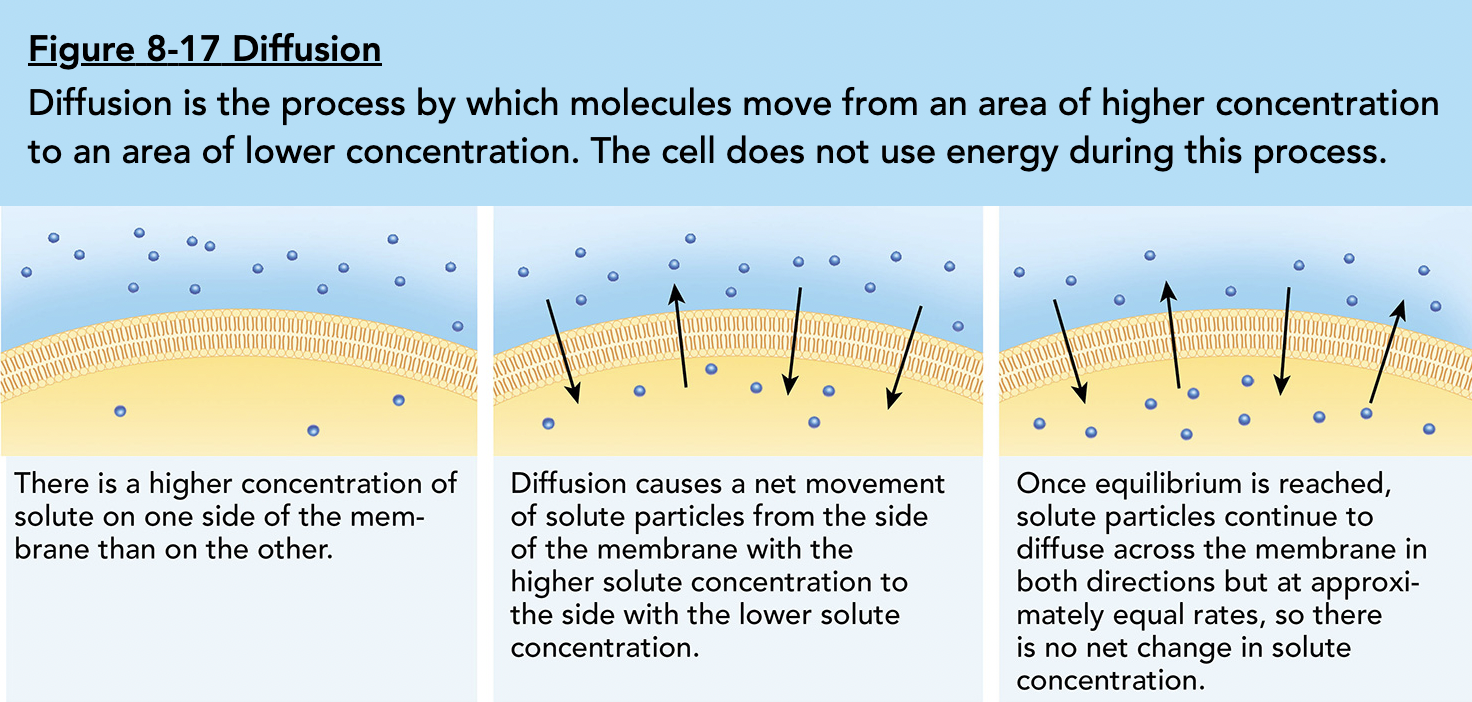
Another kind of diffusion is facilitated diffusion, it is needed when a molecule is too large to directly diffuse across the membrane. The phospholipid bilayer is semi-permeable, the size and polarity of the molecule determine whether or not it can physically pass through or pass through the hydrophobic center. If not, it has to pass through a transmembrane protein to pass through. Since it's still diffusion, no cellular energy is required.
Osmosis is a type of facilitated diffusion which is the movement of water through a cell membrane with the help of aquaporins. A cell's lipid bilayer is hydrophobic, which is why this process occurs. Just like other forms of diffusion, molecules will move from a higher to a lower concentration, the difference being that these are water molecules instead of solute molecules.
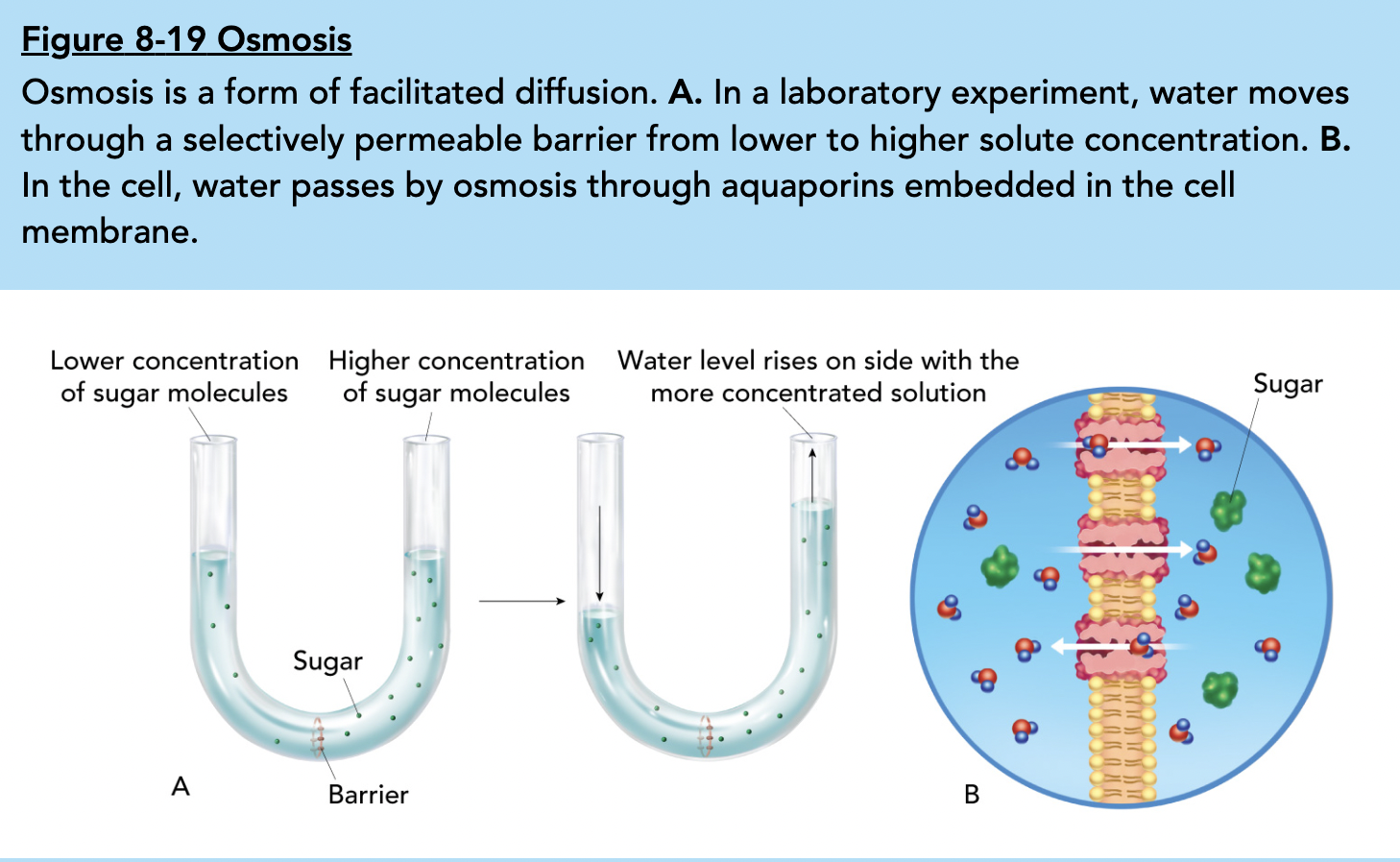
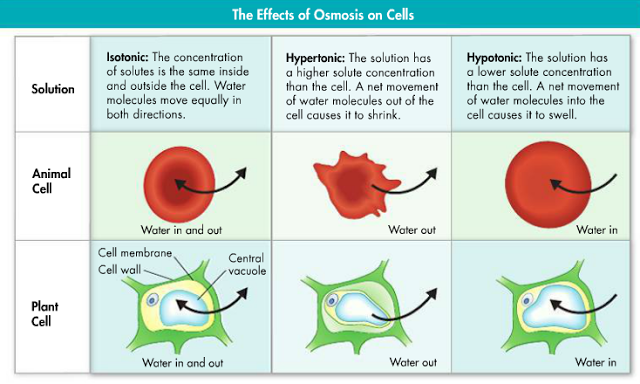
Active Transport (Energy Required)
When cells need to transport materials against a concentration difference, it is known as active transport. Smaller molecules/ions can be carried out by transport proteins (molecular transport), but larger ones can be transported by the processes of endocytosis and exocytosis (bulk transport). Sometimes, this may even change the shape of the cell membrane.
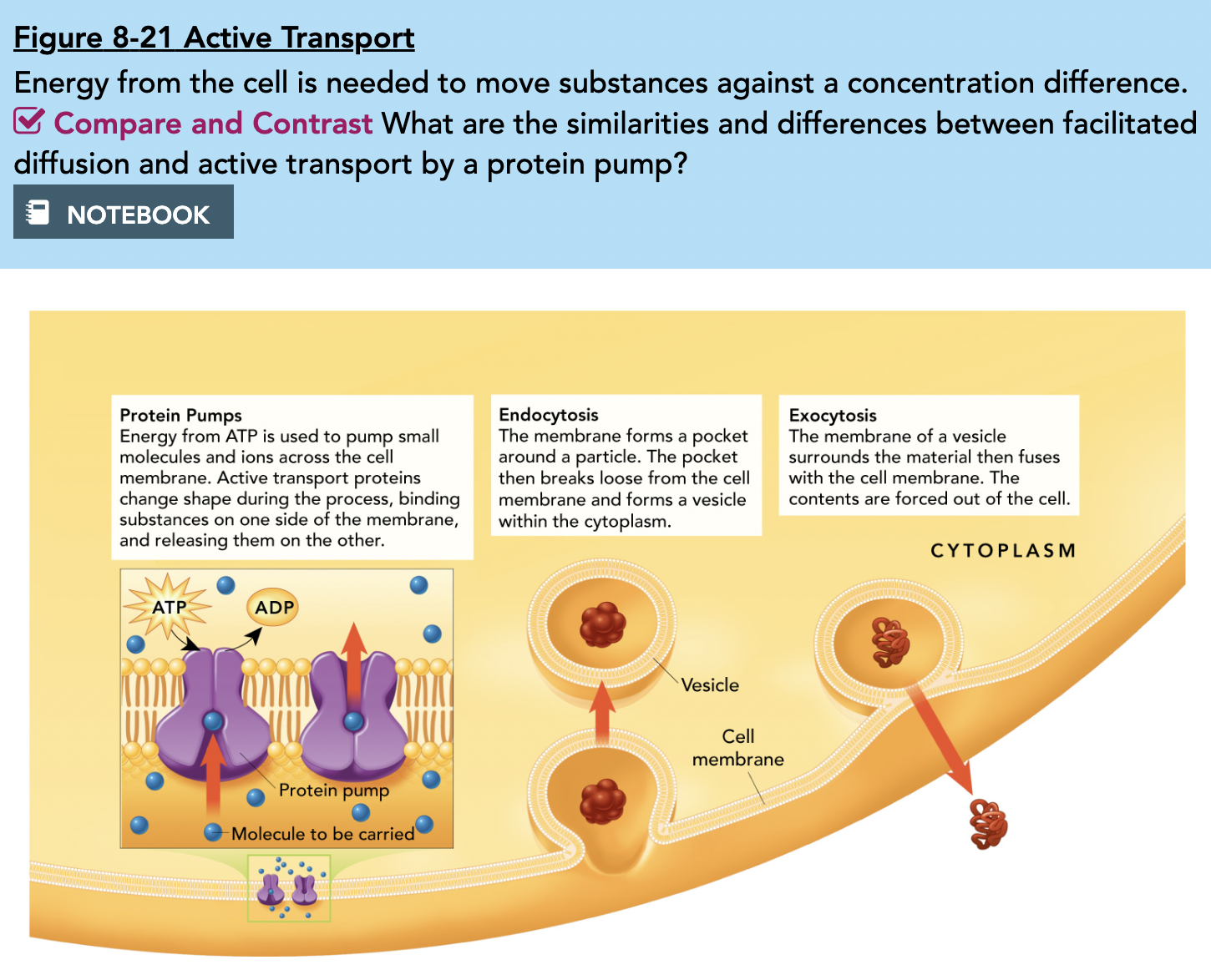
8.4 Homeostasis and Cells
To maintain homeostasis, unicellular organisms grow, respond to the environment, transform energy, and reproduce. The cells of multicellular organisms become specialized for particular tasks and communicate with one another to maintain homeostasis. 
A cell that carries out a specific function connects to one another, forming tissue, and then when the tissues come together, it creates an organ.
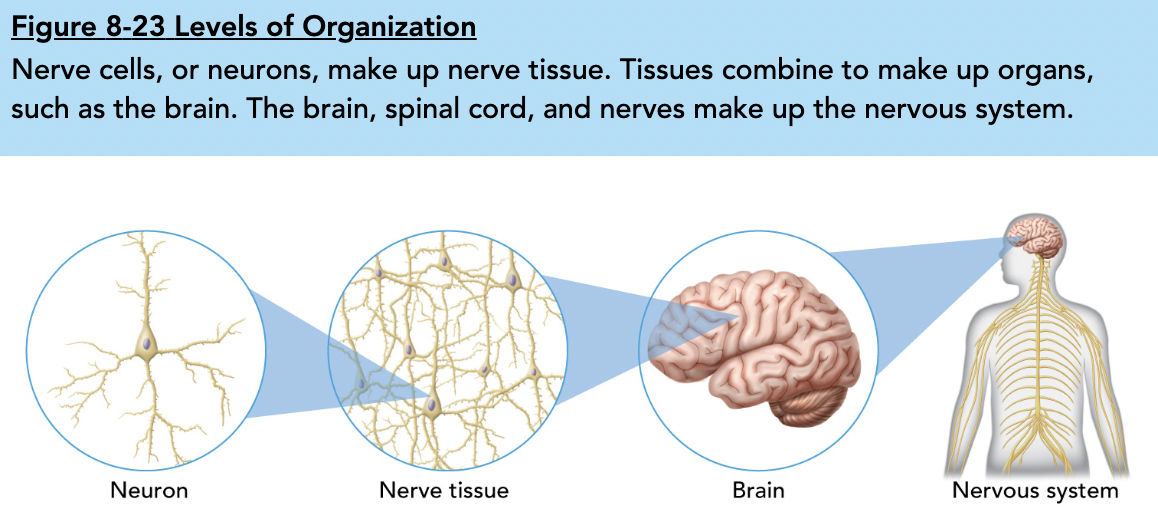
In a large organism, cells communicate with chemical signals which speed or slow down certain processes of the cell which receives the signal. Chemical messages can be sent between the connections which cells have with one other, and in order for a response to occur, a cell must have a receptor (a molecule that binds to a specific substance, causing a specific effect).
